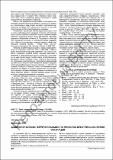| dc.contributor | Брестский государственный технический университет | ru_RU |
| dc.contributor | Brest State Technical University | ru_RU |
| dc.contributor.author | Ипатова, Ольга Валерьевна | |
| dc.coverage.spatial | Брест | ru_RU |
| dc.date.accessioned | 2020-02-19T08:22:55Z | |
| dc.date.available | 2020-02-19T08:22:55Z | |
| dc.date.issued | 2012 | |
| dc.identifier.citation | Ипатова, О. В. Административно-территориальное устройство Брестчины во время оккупации / О. В. Ипатова
// Вестник Брестского государственного технического университета. Серия: Гуманитарные науки. – 2012. – № 6. – С. 40–44 : ил. – Библиогр.: с. 44 (7 назв.). | ru_RU |
| dc.identifier.uri | https://rep.bstu.by/handle/data/3980 | |
| dc.description | IPATOVA O. V. Brestchina's administrative-territorial device during occupation | ru_RU |
| dc.description.abstract | Cтруктура регионального управления Брестчины во время Великой Отечественной войны включала 4 основных аспекта: 1) военные комиссары стояли во главе административно-территориальных единиц; 2) наличие властной вертикали (принцип «фюрерства»); 3) комендатуры взаимодействовали с местными управами, возглавляемыми бургомистрами, старшинами, солтысами; 4) местные и военные комендатуры обеспечивали управление на Беларуси, разделенной на 5 частей. В деревнях и селах немецкие военные структуры играли вспомогательную роль – здесь большую значимость имели руководимые ими представители местной белорусской коллаборации, избираемые в местную управу. Несмотря на то, что местному населению оккупированных территорий были предоставлены функции местного самоуправления на уровне районов (поветов), городов, волостей (гмин), грамады и деревень, говорить о политической самостоятельности административно-территориальных образований на территории Беларуси в целом не представляется возможным, т.к. осуществление предоставленных местному населению функций администрирования находилось под контролем немецких военных комиссаров, начальников районов, волостей и при реализации принципа «фюрерства» в управлении захваченными территориями. Оккупированные территории стали субъектами гражданских форм управления без учёта экономических, культурных и этнических особенностей и не приобрели статус самостоятельных субъектов политики фашисткой Германии. | ru_RU |
| dc.language.iso | ru | ru_RU |
| dc.publisher | БрГТУ | ru_RU |
| dc.relation.ispartofseries | Гуманитарные науки; | |
| dc.subject | административное право | ru_RU |
| dc.subject | administrative law | ru_RU |
| dc.title | Административно-территориальное устройство Брестчины во время оккупации | ru_RU |
| dc.type | Статья (Article) | ru_RU |
| dc.identifier.udc | 342 | ru_RU |
| dc.abstract.alternative | The regional governance structures of the Brest region during the Great Patriotic War included 4 main areas: 1) the military commissioners were at the head of the administrative-territorial units, and 2) the presence of the vertical of power (the principle of "fyurerstva"), and 3) interact with the local commandant's council, headed by mayors, elders, soltys, and 3) Local and military commandant provides control in Belarus, which is divided into 5 parts. In the villages of the German military authorities had a supporting role - is more important were led by representatives of the local Belarusian collaboration elected to the local council.
Despite the fact that the local population of the occupied territories were given the function of local government at the district level (povets), towns, townships (communes), gramado and villages, to talk about the political independence of the administrative-territorial formations and Belarus as a whole is not possible, so because implementation of the provision of local public administration functions were under the control of the German military commissioners, chiefs of districts, townships and in the implementation of the principle of "fyurerstva" in the management of the occupied territories. The occupied territories have become subjects of civil forms of government without considering the economic, cultural and ethnic characteristics, and did not acquire the status of independent political entities of Nazi Germany. | ru_RU |
